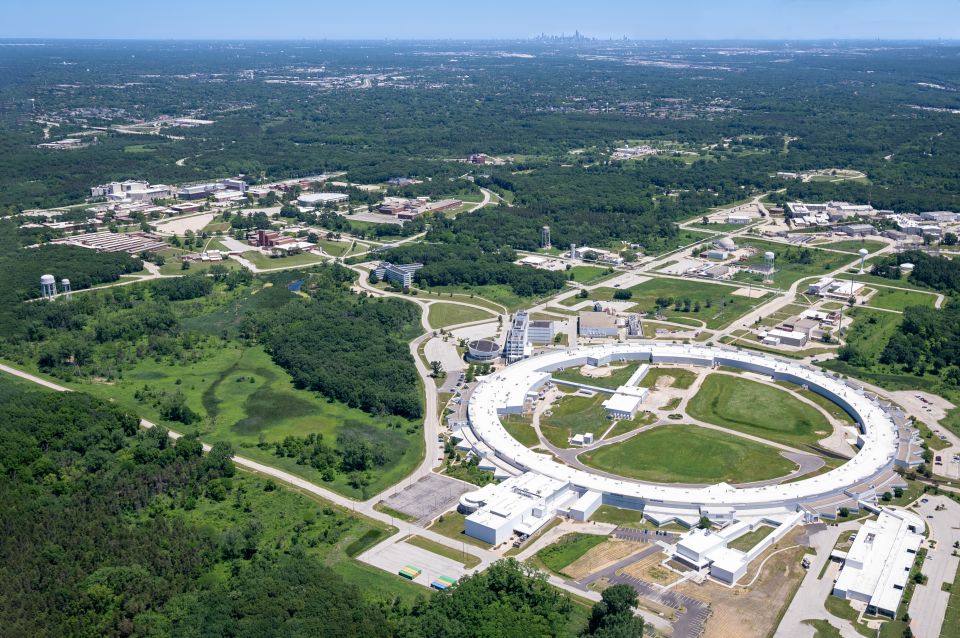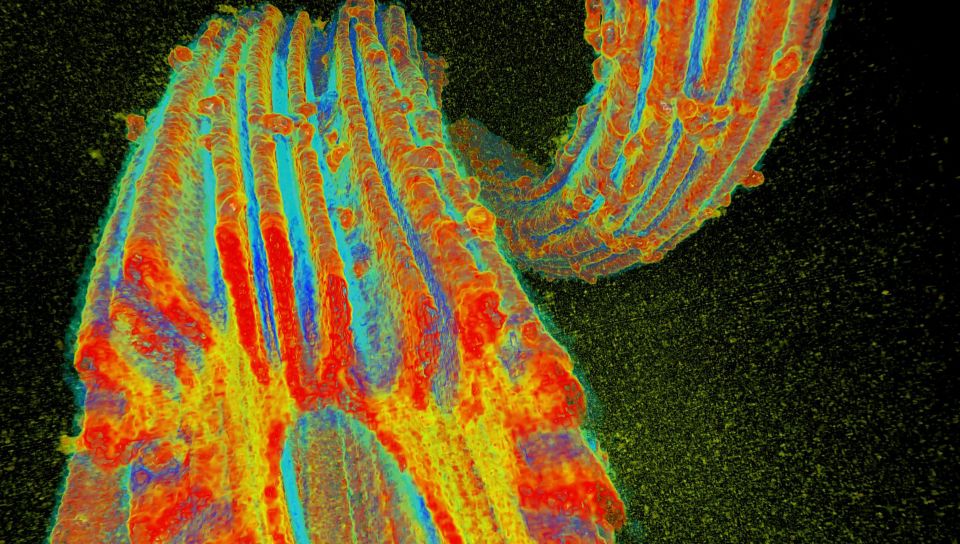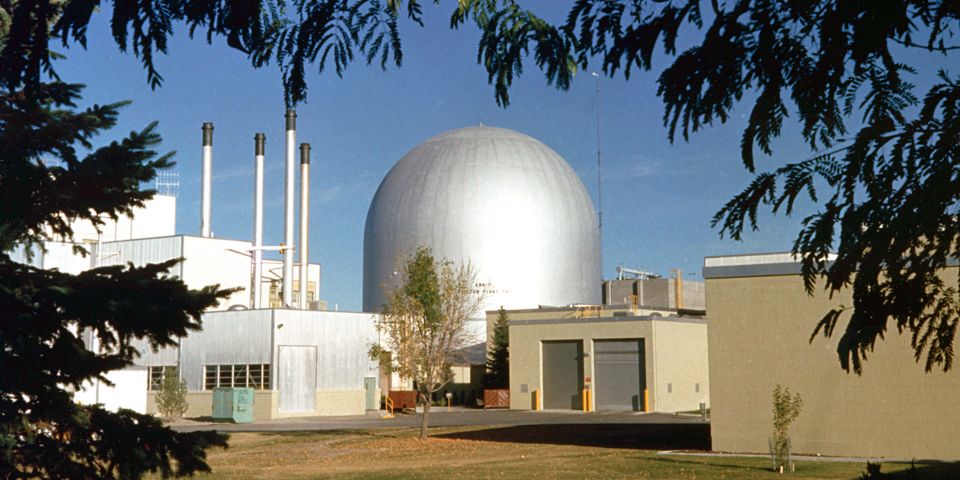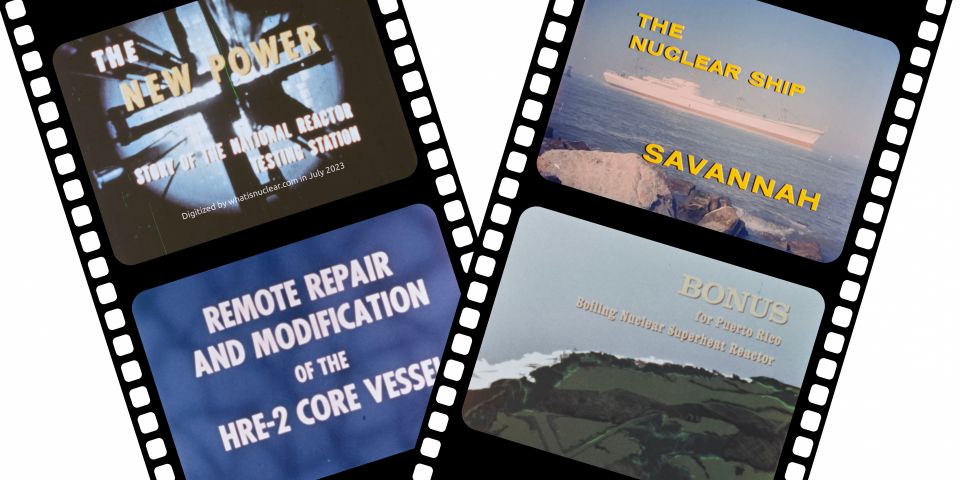Cue ominous chords and fade in from black . . .
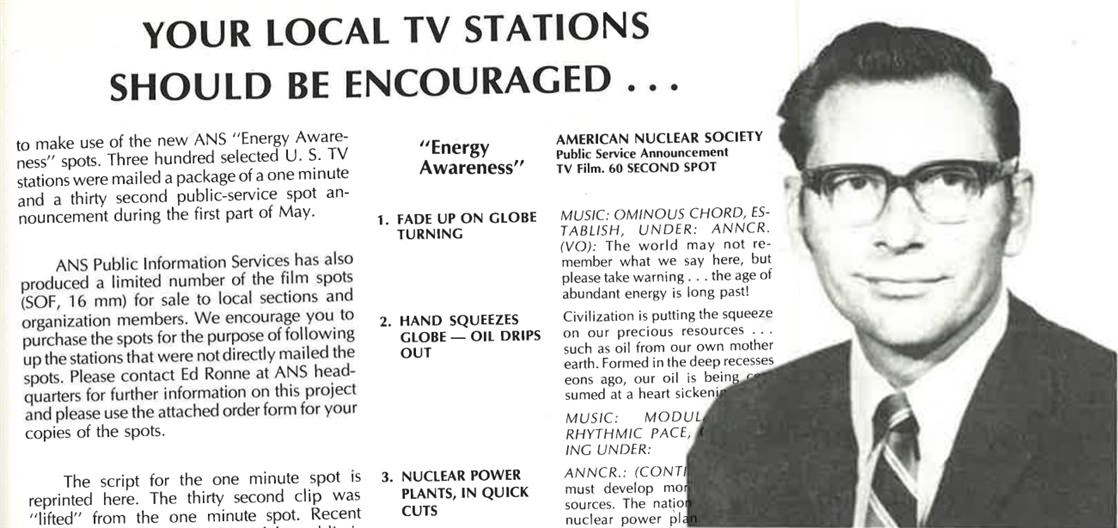
It’s 1976, and you’re watching TV when a public service announcement from the American Nuclear Society airs, showing the earth being squeezed dry of its last drops of oil by a giant hand as it urges more “safe, reliable, and economical” nuclear power plants. The narrator’s last words, intoned over a fading sunset, still ring true today: “Our world is hungry for energy, and we must move ahead to preserve our future. If we don’t, we could find ourselves in the dark ages of the seventies.”
ANS mailed 30- and 60-second “Energy Awareness” PSAs on 16-mm film to about 300 television stations around the country in May 1976 and reported that they were viewed by an estimated 83,122,000 people in just three months—free airtime that was valued at about $90,000. In 1977 and 1978, at least 900 stations received a new set of clips.
Have you seen these films? Nuclear News staff has unearthed documentation of ANS’s venture into TV advertising. But while hundreds of copies were sent from ANS headquarters direct to TV stations and sold for $45 to ANS local sections and members for outreach purposes, ANS no longer has a copy of the original films. Do you?
ANS members or readers who have a copy of films or records produced by ANS are encouraged to contact askanything@ans.org to make it possible for ANS to archive the content digitally and share this historical footage with a wider audience.
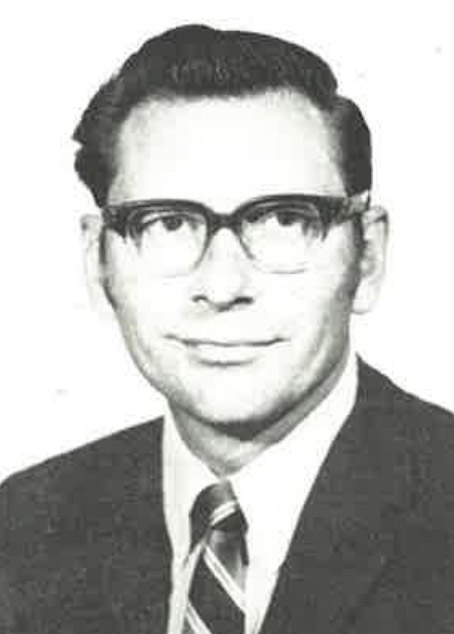
Ronne
Scripted: The made-for-TV PSAs—along with a series of short clips and longer interviews prepared for radio—were produced by Ed Ronne, a veteran broadcast communicator who joined ANS staff in July 1974 as manager of public information services. Ronne had 10 years’ experience communicating about nuclear energy in his previous position on the public information staff of Argonne National Laboratory from 1960 to 1970. According to an article in the September 1974 issue of NN, he joined ANS hoping “to help improve the layman’s knowledge of the atom: ‘What we ought to do is get the facts out to the public, working with the local media. ANS is in a position to give the picture like it is.’”
Ronne introduced ANS’s TV PSAs in a May 1976 NN article, explaining that “part of the rationale for the form and substance of the TV spots came from surveys that showed about half the public does not believe an energy crisis exists,” while other surveys “show that television has more credibility with viewers than other media, and that among television viewers there is a 50-50 split between those supporting and those opposing nuclear power development.”
The TV spots use music, imagery, stark words, and Ronne’s honed radio voice to amplify awareness of the energy crisis of the mid-1970s, warning that “the world may not remember what we say here, but please take warning . . . the age of abundant energy is long past! . . . Civilization is putting the squeeze on our precious resources . . . such as oil from our own Mother Earth. Formed in the deep recesses eons ago, our oil is being consumed at a heart-sickening rate.”
Radio too! In 1976, the same year its first TV PSAs were released, ANS also issued a series of 12 radio interviews, recorded on three LPs. The complete set of 10-minute interviews were “offered to 6,500 U.S. and foreign broadcasters” and covered “not only nuclear power, but . . . interviews as well on solar, geothermal, and wind power.”
Including other energy topics would “aid in giving the series wide coverage and a ready reception at radio stations and other organizations that are concerned about the nation’s energy problems,” Ronne believed. In September of that year, Ronne reported that the interviews had been heard on about 425 stations, accounting for about 850 hours of free radio time.
“WANTED . . . A select group of names of informed scientists, engineers, and administrators who are willing to challenge critics, consumers, commentators, and take part in controversy.”
So read a “want ad” published by Ronne in NN’s July 1975 issue as he worked to replace an out-of-date public information directory with a new cadre of experts he called “The Communicators”—a “handpicked group of professionals who know their way around.”
Some members of “The Communicators” were doubtless among the voices heard on an LP produced and distributed by ANS in 1978 to 2,500 leading radio stations. A series of 15 “Energy Awareness” spots, ranging in length from 45 to 90 seconds, featured Dixy Lee Ray, Chauncey Starr, and other experts.
A set of 12 10-minute educational interviews featuring other nuclear luminaries was released in 1979 as “Energy and the Atom,” reprising a title used in 1975 and 1976 for similar interview series.
Quick Energy Facts: The last series of ANS radio spots known to have been produced by Ronne was released in 1980 with a pitch to radio stations that “Americans today are, more than ever, painfully aware of the high cost of energy. . . . Your cooperation in airing these announcements will be much appreciated. All we ask is that you complete and return the attached postcard letting us know that you were able to use the spots.” By early 1981, 200 radio stations had responded, confirming that they would air the spots.
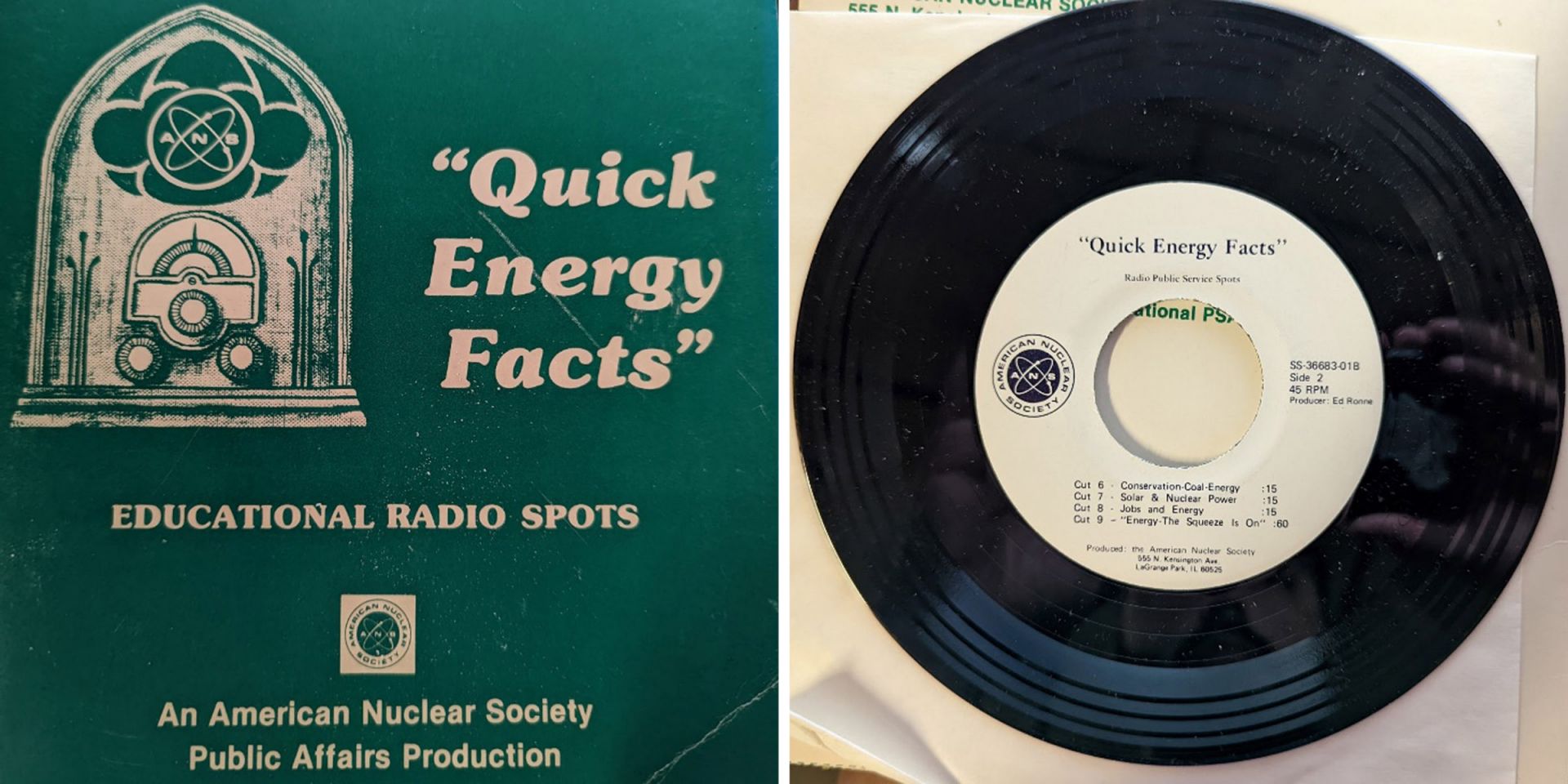 Here are just a few of those “Quick Energy Facts”:
Here are just a few of those “Quick Energy Facts”:
“Did you know that Mother Nature formed a nuclear reactor in Africa that generated power for about 500,000 years? This reactor produced 12,000 pounds of radioactive waste and 4,000 pounds of plutonium. These wastes have remained in place for nearly 2 billion years. Man has not been harmed by them. The moral? We can manage our modern nuclear wastes safely.”
“Conservation is the key to meeting American energy needs in the future, but we need to combine conservation with development of all our resources: solar and wind power, coal and natural gas, and nuclear energy. It takes a lot of energy to keep America running. Only by developing all of our nation’s resources will we reduce our dependence on imported oil.”
“The volume of high-level radioactive waste produced in one year by all our nuclear facilities is less than the space under a dining-room table. Technology now exists, and is being used by other countries, to store this waste safely for ages to come. We can manage our nuclear waste and protect our environment.”



